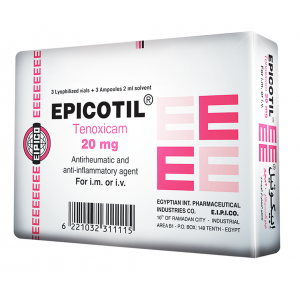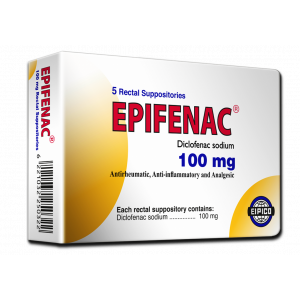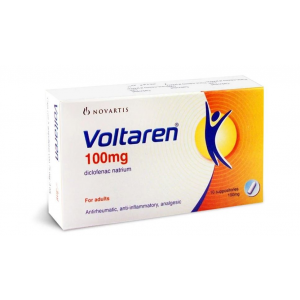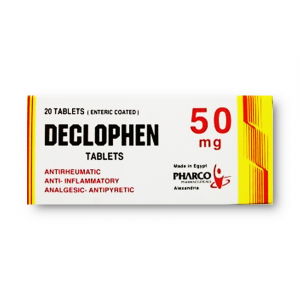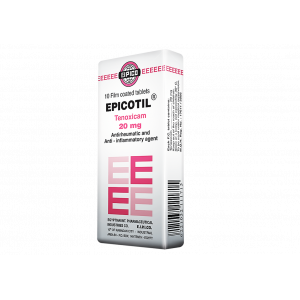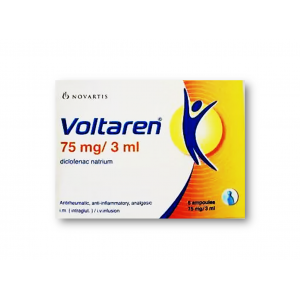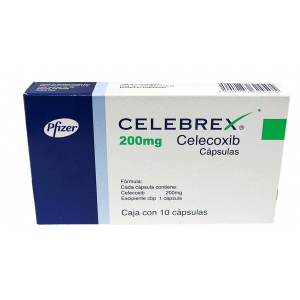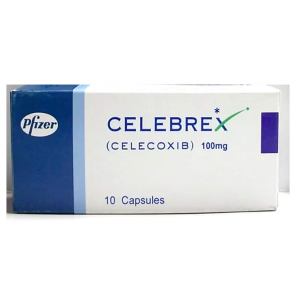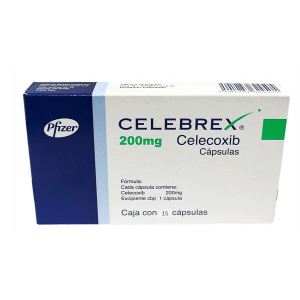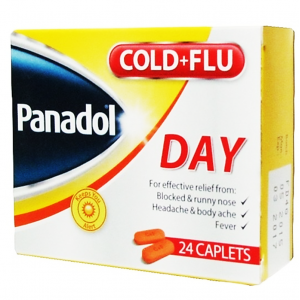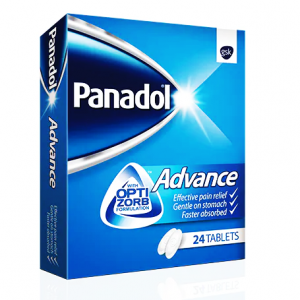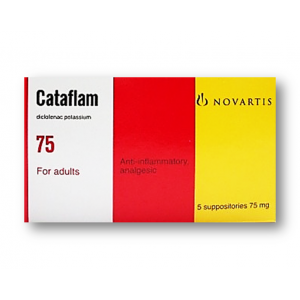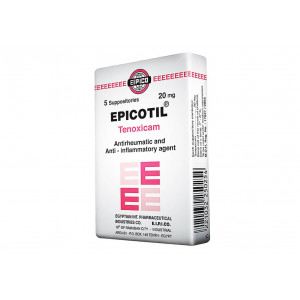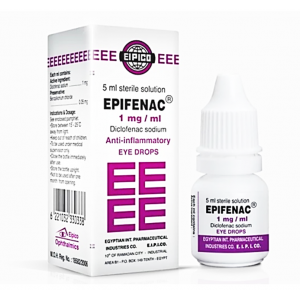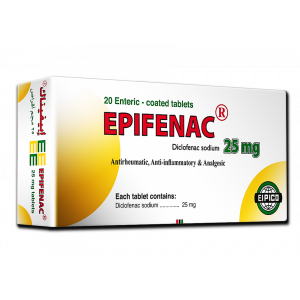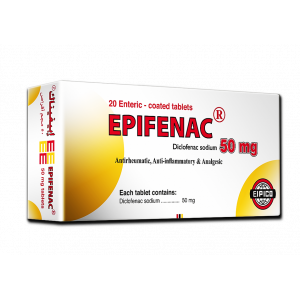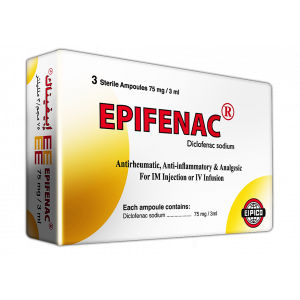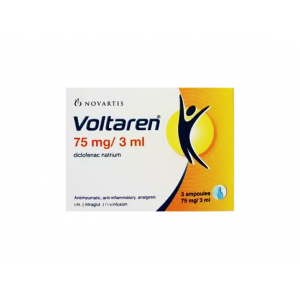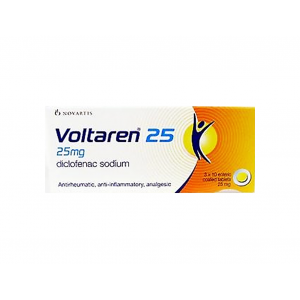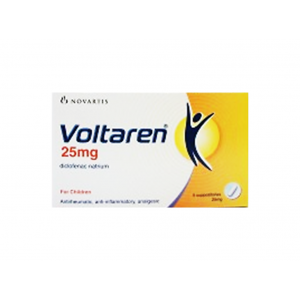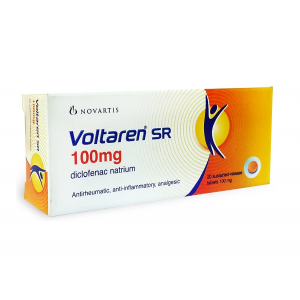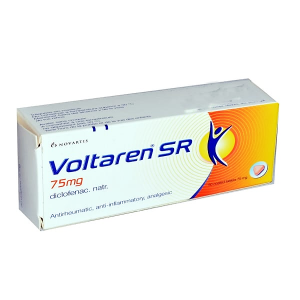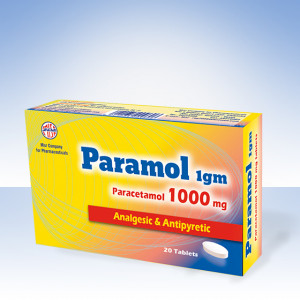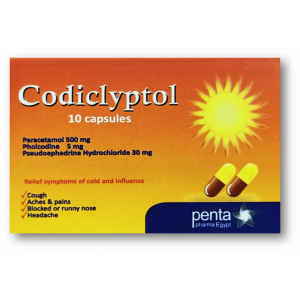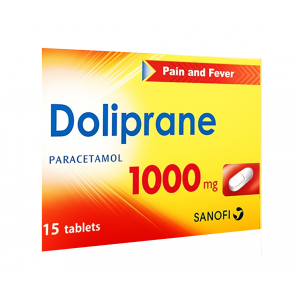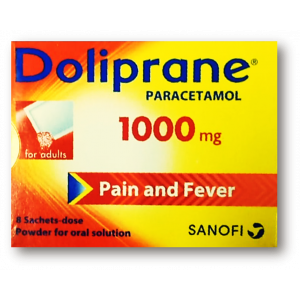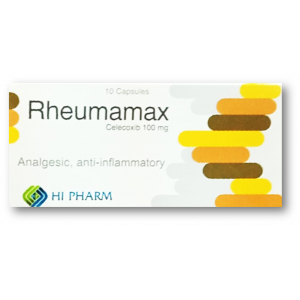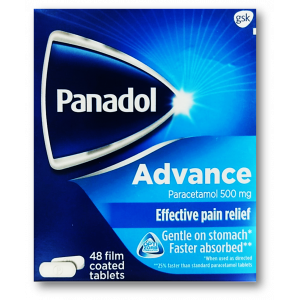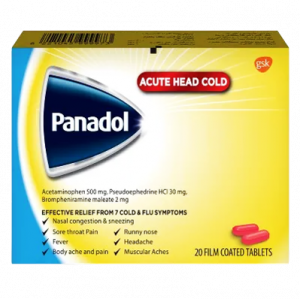- Anti-hestaminic & Respiratory Drugs (16)
- Anti-inflammatory Drugs (137)
- Baby & Mom (1113) +-
- Baby & Mom > Bath, skin & Hair > Skin Care > wibes (47)
- Beauty (2407) +-
- Beauty > Skin Care > whitening (232)
- Chemotherapy & Immune Response (333) +-
- Chemotherapy & Immune Response > ANTI-FUNGAL (4)
- Chemotherapy & Immune Response > Chemotherapeutic Agents > Hormone Antagonists >Enzyme Inhibitors (110)
- CIRCULATORY DISTURBANCE AGENTS (15)
- CORTECOSTEROIDS (6)
- Diet & Fitness Products (189) +-
- DRUG AFFECTING CENTRAL NERVOUS SYSTEM (138)
- Drugs affecting CNS >Anti- epileptic (46)
- LIVER SUPPORT>MULTIVITAMINS (22)
-
Medical Supplies (451)
+-
- Chemicals & Disinfectants (17)
- Dental Supplies (27)
- Devices & Instruments (8)
- Diabetic Supplies (95)
- General Medical Supplies (21)
- I.V & Medical Solution (0)
- Intensive Care Unit & Anesthesia Supplies (0)
- Kindney Unit Supplies (13)
- Lab Supplies (1)
- Miscellaneous (21)
- Neonatal Unit Supplies (0)
- Operation Room Supplies (4)
- Sanitary (5)
- Sterilization Supplies (0)
- Surgical Sutures (4)
- Syringes (2)
-
Medicines & Health (2187)
+-
- Allergy & Sinus (84)
- Children's Health Care (46)
- Cough, Cold & Flu (258)
- Digestive Health & Nausea (179)
- Ear, Nose & Throat Care (148)
- Eye Care (103)
- Feminine Care (287)
- Foot Care (3)
- Orthopaedic Appliances (0)
- Pain Relief & Management (180)
- Pill Organizer (0)
- Skin Treatments (640)
- Sleep & Snoring Aids (0)
- Support & Braces (7)
- Medicines & health > Gout releif (35)
- Natural & Organic Products (60) +-
- OTC > Analgesics > Anti-inflammatory Drugs (32)
-
Personal Care (2701)
+-
- Bath & Body (213)
- Deodorant & Anti-perspirants (159)
- Ear, Nose & Throat Care (142)
- Eye Care (109)
- Feminine Care (320)
- Foot Care (10)
- Hair Care (350)
- Home Tests & Monitorings (16)
- Incontinence (7)
- Lip Care (19)
- Massage & Relaxation (14)
- Natural & Organic Personal Care (6)
- Oral Care (72)
- Pregnancy & Fertility (52)
- Shaving & Grooming (53)
- Sun Care (52)
- Prescribtion drugs > cardiovascular system > Hypertention drugs (208)
-
Prescription Drugs (2231)
+-
- Analgesics (149)
- Cardiovascular System (282)
- Drugs Affecting CNS (155)
- Drugs Affecting Musculoskeletal System (46)
- Drugs Used In Infections (31)
- Ear & Nose Drugs (2)
- Endocrine System (128)
- Gastrointestinal Tract (182)
- Gastrointestinal Tract (168)
- Miscellaneous (2)
- Nutrients & Blood Electrolytes (0)
- Obstetric & Gynaecology Disorders (1)
- Respiratory System (101)
- Topical Preparations (21)
- Urinary Tract Disorders (12)
- Vaccines (1)
- Prescription Drugs > Cardiovascular System > Anti-hypertensive drugs > Duiretics > Loop duiretics (46)
- prescription drugs > cardiovascular system >Anti-hypertensive drugs > duiretics > Aldosterone antagonist duiretics (63)
- prescription drugs > cardiovascular system >Anti-hypertensive drugs > duiretics > duiretic combinations (60)
- prescription drugs > cardiovascular system >Anti-hypertensive drugs > duiretics > loop duiretics (60)
- Prescription Drugs > Gastrointestinal Tract > Liver treatment (47)
- Sexual Wellness (168) +-
- strong anti-emetic & adjuvent used with anti-neoplastic (1)
- Vitamins & Minerals Supplements (402)
- Vitamins & Supplements> folic acid (1635) +-
Ex Tax: 18EGP
Example
You can return the product within 14 days of purchase.
ReturnsYou can return the product within 14 days of purchase.

Prescription Information
Composition
Each 3 ml ampoule contains:
Diclofenac sodium ..................................................................................................... 75 mg
Inactive ingredients:
Propylene glycol, sodium metabisulphite, benzyl alcohol, mannitol, sodium hydroxide, water for injection.
Therapeutic Indications
Ampoules for IM Use:
The ampoules are effective in acute forms of pain, including renal colic, exacerbations of osteoarthritis and rheumatoid arthritis, acute back pain, acute gout, acute trauma and fractures, and post-operative pain.
Ampoules used in Intravenous Infusion:
For treatment or prevention of post-operative pain in the hospital setting.
Dosage and Administration
Undesirable effects may be minimised by using the lowest effective dose for the shortest duration necessary to control symptoms.
Adults:
EPIFENAC Ampoules (given IM or IV) should not be given for more than two days; if necessary, treatment can be continued with EPIFENAC Tablets or Suppositories.
Intramuscular Injection:
The following directions for intramuscular injection must be adhered to in order to avoid damage to a nerve or other tissue at the injection site.
One ampoule once (or in severe cases twice) daily intramuscularly by deep intragluteal injection into the upper outer quadrant.
If two injections daily are required, it is advised that the alternative buttock be used for the second injection.
Alternatively, one 75 mg ampoule of can be combined with other dosage forms of EPIFENAC (Tablets or Suppositories) up to the maximum daily dosage of 150 mg.
Renal Colic:
One 75 mg ampoule intramuscularly. A further ampoule may be administered after 30 minutes if necessary. The recommended maximum daily dose of EPIFENAC is 150 mg.
Intravenous Infusion:
Immediately before initiating an intravenous infusion, EPIFENAC must be diluted with 100-500 ml of either sodium chloride solution (0.9%) or glucose solution (5%). Both solutions should be buffered with sodium bicarbonate solution (0.5 ml 8.4% or 1 ml 4.2%). Only clear solutions should be used. EPIFENAC must not be given as an intravenous bolus injection.
Two alternative regimens are recommended:
For the Treatment of Moderate to Severe Post-operative Pain:
75 mg should be infused continuously over a period of 30 minutes to 2 hours.
If necessary, treatment may be repeated after 4 - 6 hours, not exceeding 150 mg within any period of 24 hours.
For the Prevention of Post-operative Pain:
A loading dose of 25 mg-50 mg should be infused after surgery over 15 minutes to 1 hour, followed by a continuous infusion of approximately 5 mg per hour up to a maximum daily dosage of 150 mg.
Special populations:
The recommended maximum daily dose of EPIFENAC is 150 mg.
Elderly:
Although the pharmacokinetics of EPIFENAC are not impaired to any clinically relevant extent in elderly patients, nonsteroidal anti-inflammatory drugs should be used with particular caution in such patients who generally are more prone to adverse reactions. In particular it is recommended that the lowest effective dosage be used in frail elderly patients or those with a low body weight (see also Precautions) and the patient should be monitored for GI bleeding during NSAID therapy.
Renal impairment:
EPIFENAC is contraindicated in patients with severe renal impairment. No diclofenac specific studies have been carried out in patients with renal impairment, therefore, no specific dose adjustment recommendations can be made. Caution is advised when administering EPIFENAC to patients with mild to moderate renal impairment.
Hepatic impairment:
EPIFENAC is contraindicated in patients with severe hepatic impairment. No diclofenac specific studies have been carried out in patients with hepatic impairment, therefore, no specific dose adjustment recommendations can be made. Caution is advised when administering EPIFENAC to patients with mild to moderate hepatic impairment.
Pediatric population:
EPIFENAC Ampoules are not recommended for use in children.
Contraindications
Hypersensitivity to the active substance, sodium metabisulphite or any of the excipients.
Active, gastric or intestinal ulcer, bleeding or perforation.
History of gastrointestinal bleeding or perforation, relating to previous NSAID therapy.
Active, or history of recurrent peptic ulcer/haemorrhage (two or more distinct episodes of proven ulceration or bleeding).
Severe hepatic, renal or cardiac failure.
Like other nonsteroidal anti-inflammatory drugs (NSAIDs), EPIFENAC is also contraindicated in patients in whom attacks of asthma, angioedema, urticaria or acute rhinitis are precipitated by ibuprofen, acetylsalicylic acid or other nonsteroidal anti-inflammatory drugs.
Established congestive heart failure (NYHA II-IV), ischemic heart disease, peripheral arterial disease and/or cerebrovascular disease.
Specifically for IV use:
Concomitant NSAID or anticoagulant use (including low dose heparin).
History of haemorrhagic diathesis, a history of confirmed or suspected cerebrovascular bleeding.
Operations associated with a high risk of haemorrhage.
A history of asthma.
Moderate or severe renal impairment (serum creatinine > 160 μmol/l).
Hypovolaemia or dehydration from any cause.
Warnings and Precautions
General:
Undesirable effects may be minimised by using the lowest effective dose for the shortest duration necessary to control symptoms.
The concomitant use of EPIFENAC with systemic NSAIDs including cyclooxygenase-2 selective inhibitors should be avoided due to the absence of any evidence demonstrating synergistic benefits and the potential for additive undesirable effects.
Caution is indicated in the elderly on basic medical grounds. In particular, it is recommended that the lowest effective dose be used in frail elderly patients or those with a low body weight.
As with other nonsteroidal anti-inflammatory drugs including EPIFENAC, allergic reactions, including anaphylactic/anaphylactoid reactions can also occur without earlier exposure to the drug.
Like other NSAIDs, EPIFENAC may mask the signs and symptoms of the infection due to its pharmacodynamic properties.
EPIFENAC contains sodium metabisulphite, a sulfite that may cause allergic-type reactions including anaphylactic symptoms and life-threatening or less severe asthmatic episodes in certain susceptible people. Sulfite sensitivity is seen more frequently in asthmatic than nonasthmatic people.
Gastrointestinal effects: Gastrointestinal bleeding (haematemesis, melaena), ulceration or perforation which can be fatal has been reported with all NSAIDs including diclofenac and may occur at any time during treatment, with or without warning symptoms or a previous history of serious GI events. They generally have more serious consequences in the elderly. If gastrointestinal bleeding or ulceration occurs in patients receiving EPIFENAC, the drug should be withdrawn.
As with all NSAIDs, including diclofenac, close medical surveillance is imperative and particular caution should be exercised when prescribing EPIFENAC in patients with symptoms indicative of gastrointestinal disorders, or with a history suggestive of gastric or intestinal ulceration, bleeding or perforation. The risk of GI bleeding, ulceration or perforation is higher with increasing NSAID doses including diclofenac, and in patients with a history of ulcer, particularly if complicated with haemorrhage or perforation.
The elderly have increased frequency of adverse reactions to NSAIDs especially gastrointestinal bleeding and perforation which may be fatal.
To reduce the risk of GI toxicity in patients with a history of ulcer, particularly if complicated with haemorrhage or perforation, and in the elderly, the treatment should be initiated and maintained at the lowest effective dose.
Combination therapy with protective agents (e.g. misoprostol or proton pump inhibitors) should be considered for these patients, and also for patients requiring concomitant use of medicinal products containing low dose acetylsalicylic acid (ASA/aspirin) or medicinal products likely to increase gastrointestinal risk. Patients with a history of GI toxicity, particularly when elderly, should report any unusual abdominal symptoms (especially GI bleeding).
Caution is recommended in patients receiving concomitant medications which could increase the risk of ulceration or bleeding, such as systemic corticosteroids, anticoagulants such as warfarin, selective serotonin-reuptake inhibitors (SSRIs) or anti-platelet agents such as acetylsalicylic acid.
Close medical surveillance and caution should be exercised in patients with ulcerative colitis, or with Crohn's disease as these conditions may be exacerbated.
Hepatic effects: Close medical surveillance is required when prescribing EPIFENAC to patients with impairment of hepatic function as their condition may be exacerbated.
As with other NSAIDs, including EPIFENAC, values of one or more liver enzymes may increase. During prolonged treatment with EPIFENAC, regular monitoring of hepatic function is indicated as a precautionary measure. If abnormal liver function tests persist or worsen, clinical signs or symptoms consistent with liver disease develop or if other manifestations occur (eosinophilia, rash), EPIFENAC should be discontinued.
Hepatitis may occur with EPIFENAC without prodromal symptoms.
Caution is called for when using EPIFENAC in patients with hepatic porphyria, since it may trigger an attack.
Renal effects: As fluid retention and oedema have been reported in association with NSAIDs therapy, including diclofenac, particular caution is called for in patients with impaired cardiac or renal function, history of hypertension, the elderly, patients receiving concomitant treatment with diuretics or medicinal products that can significantly impact renal function, and those patients with substantial extracellular volume depletion from any cause, e.g. before or after major surgery.
Monitoring of renal function is recommended as a precautionary measure when using EPIFENAC in such cases.
Discontinuation therapy is usually followed by recovery to the pre-treatment state.
Skin effects: Serious skin reactions, some of them fatal, including exfoliative dermatitis, Stevens-Johnson syndrome and toxic epidermal necrolysis, have been reported very rarely in association with the use of NSAIDs, including diclofenac. Patients appear to be at the highest risk of these reactions early in the course of therapy; the onset of the reaction occurring in the majority of cases within the first month of treatment. EPIFENAC should be discontinued at the first appearance of skin rash, mucosal lesions or any other signs of hypersensitivity.
SLE and Mixed Connective tissue disease: In patients with systemic lupus erythematosus (SLE) and mixed connective tissue disorders there may be an increased risk of aseptic meningitis.
Cardiovascular and Cerebrovascular effects: Patients with significant risk factors for cardiovascular events (e.g. hypertension, hyperlipidaemia, diabetes mellitus, smoking) should only be treated with EPIFENAC after careful consideration. As the cardiovascular risks of EPIFENAC may increase with dose and duration of exposure, the shortest duration possible and the lowest effective daily dose should be used.
The patient's need for symptomatic relief and response to therapy should be re-evaluated periodically.
Appropriate monitoring and advice are required for patients with a history of hypertension and/or mild to moderate congestive heart failure as fluid retention and oedema have been reported in association with NSAID therapy including diclofenac.
Clinical trial and epidemiological data consistently point towards increased risk of arterial thrombotic events (for example myocardial infarction or stroke) associated with the use of diclofenac, particularly at high dose (150 mg daily) and in long term treatment.
Patients with uncontrolled hypertension, congestive heart failure, established ischaemic heart disease, peripheral arterial disease, and/or cerebrovascular disease should only be treated with EPIFENAC after careful consideration.
Haematological effects: During prolonged treatment with EPIFENAC, as with other NSAIDs, monitoring of the blood count is recommended.
EPIFENAC may reversibly inhibit platelet aggregation. Patients with defects of haemostasis, bleeding diathesis or haematological abnormalities should be carefully monitored.
Pre-existing asthma: In patients with asthma, seasonal allergic rhinitis, swelling of the nasal mucosa (i.e. nasal polyps), chronic obstructive pulmonary diseases or chronic infections of the respiratory tract (especially if linked to allergic rhinitis-like symptoms), reactions on NSAIDs like asthma exacerbations (so called intolerance to analgesics/analgesics asthma), Quincke's oedema or urticaria are more frequent than in other patients. Therefore, special precaution is recommended in such patients (readiness for emergency). This is applicable as well for patients who are allergic to other substances, e.g. with skin reactions, pruritus or urticaria.
Like other drugs that inhibit prostaglandin synthetase activity, diclofenac sodium and other NSAIDs can precipitate bronchospasm if administered to patients suffering from, or with a previous history of bronchial asthma.
Female fertility: The use of EPIFENAC may impair female fertility and is not recommended in women attempting to conceive. In women who may have difficulties conceiving or who are undergoing investigation of infertility, withdrawal of EPIFENAC should be considered.
Drug Interactions
The following interactions include those observed with diclofenac gastro-resistant tablets and/or other pharmaceutical forms of diclofenac.
Lithium: If used concomitantly, EPIFENAC may increase plasma concentrations of lithium. Monitoring of the serum lithium level is recommended.
Digoxin: If used concomitantly, EPIFENAC may raise plasma concentrations of digoxin. Monitoring of the serum digoxin level is recommended.
Diuretics and Antihypertensive agents: Like other NSAIDs, concomitant use of EPIFENAC with diuretics and antihypertensive agents (e.g. beta-blockers, angiotensin converting enzyme (ACE) inhibitors may cause a decrease in their antihypertensive effect via inhibition of vasodilatory prostaglandin synthesis. Therefore, the combination should be administered with caution and patients, especially the elderly, should have their blood pressure periodically monitored. Patients should be adequately hydrated and consideration should be given to monitoring of renal function after initiation of concomitant therapy periodically thereafter, particularly for diuretics and ACE inhibitors due to the increased risk of nephrotoxicity.
Drugs known to cause hyperkalemia: Concomitant treatment with potassium-sparing diuretics, ciclosporin, tacrolimus or trimethoprim may be associated with increased serum potassium levels, which should therefore be monitored.
Anticoagulants and Anti-platelet agents: Caution is recommended since concomitant administration could increase the risk of bleeding.
Although clinical investigations do not appear to indicate that diclofenac has an influence on the effect of anticoagulants, there are isolated reports of an increased risk of haemorrhage in patients receiving diclofenac and anticoagulant concomitantly. Therefore, to be certain that no change in anticoagulant dosage is required, close monitoring of such patients is required. As with other nonsteroidal anti-inflammatory agents, EPIFENAC in a high dose can reversibly inhibit platelet aggregation.
Other NSAIDs including Cyclooxygenase-2 selective inhibitors and corticosteroids: Co-administration of EPIFENAC with other systemic NSAIDs or corticosteroids may increase the risk of gastrointestinal bleeding or ulceration. Avoid concomitant use of two or more NSAIDs.
Selective Serotonin Reuptake Inhibitors (SSRIs): Concomitant administration of SSRIs may increase the risk of gastrointestinal bleeding.
Antidiabetics: Clinical studies have shown that diclofenac can be given together with oral antidiabetic agents without influencing their clinical effect. However there have been isolated reports of hypoglycaemic and hyperglycaemic effects necessitating changes in the dosage of the antidiabetic agents during treatment with diclofenac. For this reason, monitoring of the blood glucose level is recommended as a precautionary measure during concomitant therapy.
Methotrexate: Diclofenac can inhibit the tubular renal clearance of methotrexate hereby increasing methotrexate levels. Caution is recommended when NSAIDs, including EPIFENAC, are administered less than 24 hours before treatment with methotrexate, since blood concentrations of methotrexate may rise and the toxicity of this substance be increase. Cases of serious toxicity have been reported when methotrexate and NSAIDs including diclofenac are given within 24 hours of each other. This interaction is mediated through accumulation of methotrexate resulting from impairment of renal excretion in the presence of the NSAID.
Ciclosporin: EPIFENAC, like other NSAIDs, may increase the nephrotoxicity of ciclosporin due to the effect on renal prostaglandins. Therefore, it should be given at doses lower than those that would be used in patients not receiving ciclosporin.
Tacrolimus: Possible increased risk of nephrotoxicity when NSAIDs are given with tacrolimus. This might be mediated through renal antiprostagladin effects of both NSAID and calcineurin inhibitor.
Quinolone antibacterials: Convulsions may occur due to an interaction between quinolones and NSAIDs. This may occur in patients with or without a previous history of epilepsy or convulsions. Therefore, caution should be exercised when considering the use of a quinolone in patients who are already receiving an NSAID.
Phenytoin: When using phenytoin concomitantly with EPIFENAC, monitoring of phenytoin plasma concentrations is recommended due to an expected increase in exposure to phenytoin.
Colestipol and Cholestyramine: These agents can induce a delay or decrease in absorption of EPIFENAC. Therefore, it is recommended to administer EPIFENAC at least one hour before or 4 to 6 hours after administration of colestipol/ cholestyramine.
Cardiac glycosides: Concomitant use of cardiac glycosides and NSAIDs in patients may exacerbate cardiac failure, reduce GFR and increase plasma glycoside levels.
Mifepristone: NSAIDs should not be used for 8-12 days after mifepristone administration as NSAIDs can reduce the effect of mifepristone.
Potent CYP2C9 inhibitors: Caution is recommended when co-prescribing EPIFENAC with potent CYP2C9 inhibitors (such as voriconazole), which could result in a significant increase in peak plasma concentrations and exposure to EPIFENAC due to inhibition of diclofenac metabolism.
Pregnancy and Lactation
Do not administer injections preserved with benzyl alcohol to premature infants, neonates, infants below 13 years, pregnant women, or nursing mothers.
Benzyl alcohol has been associated with serious adverse events & death, particulary in pediatric patents (it may cause Gasping syndrome).
Injections preservative free should be used in these populations.
Effects on ability to drive and to use machines
Patients who experience visual disturbances, dizziness, vertigo, somnolence, central nervous system disturbances, drowsiness or fatigue while taking NSAIDs should refrain from driving or operating machinery.
Undesirable Effects
Adverse reactions are ranked under the heading of frequency, the most frequent first, using the following convention: Very common: (>1/10); Common (≥ 1/100, <1/10); Uncommon (≥ 1/1,000, <1/100); Rare (≥1/10,000, <1/1000); Very rare (<1/10,000); Not known: cannot be estimated from available data.
The following undesirable effects include those reported with other short-term or long-term use.
Blood and Lymphatic system disorders:
Very rare: Thrombocytopenia, leucopoenia, anaemia (including haemolytic and aplastic anaemia), agranulocytosis.
Immune system disorders:
Rare: Hypersensitivity, anaphylactic and anaphylactoid reactions (including hypotension and shock).
Very rare: Angioneurotic oedema (including face oedema).
Psychiatric disorders:
Very rare: Disorientation, depression, insomnia, nightmare, irritability, psychotic disorder.
Nervous system disorders:
Common: Headache, dizziness.
Rare: Somnolence, tiredness.
Very rare: Paraesthesia, memory impairment, convulsion, anxiety, tremor, aseptic meningitis, taste disturbances, cerebrovascular accident.
Unknown: Confusion, hallucinations, disturbances of sensation, malaise.
Eye disorders:
Very rare: Visual disturbance, blurred vision, diplopia.
Unknown: Optic neuritis.
Ear and Labyrinth disorders:
Common: Vertigo.
Very rare: Tinnitus, impaired hearing.
Cardiac disorders:
Very rare: Palpitations, chest pain, cardiac failure, myocardial infarction.
Vascular disorders:
Very rare: Hypertension, hypotension, vasculitis.
Respiratory, Thoracic and Mediastinal disorders:
Rare: Asthma (including dyspnoea).
Very rare: Pneumonitis.
Gastrointestinal disorders:
Common: Nausea, vomiting, diarrhoea, dyspepsia, abdominal pain, flatulence, anorexia.
Rare: Gastritis, gastrointestinal haemorrhage, haematemesis, haemorrhagic diarrhoea, melaena, gastrointestinal ulcer with or without bleeding or perforation (sometimes fatal particularly in the elderly).
Very rare: Colitis (including haemorrhagic colitis and exacerbation of ulcerative colitis or Crohn's disease), constipation, stomatitis (including ulcerative stomatitis), glossitis, oesophageal disorder, diaphragm-like intestinal strictures, pancreatitis.
Hepatobiliary disorders:
Common: Increased Transaminases.
Rare: Hepatitis, jaundice, liver disorder.
Very rare: Fulminant hepatitis, hepatic necrosis, hepatic failure.
Skin and Subcutaneous tissue disorders:
Common: Rash.
Rare: Urticaria.
Very rare: Bullous eruptions, eczema, erythema, erythema multiforme, Stevens-Johnson syndrome, toxic epidermal necrolysis (Lyell's syndrome), exfoliative dermatitis, loss of hair, photosensitivity reaction, purpura, allergic purpura, pruritus.
Renal and Urinary disorders:
Very rare: Acute renal failure, haematuria, proteinuria, nephrotic syndrome, interstitial nephritis, renal papillary necrosis.
General disorders and Administration site conditions:
Common: Injection site reaction, injection site pain, injection site induration.
Rare: Oedema.
Reproductive system and Breast disorders:
Very rare: Impotence.
Clinical trial and epidemiological data consistently point towards an increased risk of arterial thrombotic events (for example myocardial infarction or stroke) associated with the use of diclofenac, particularly at high doses (150 mg daily) and in long-term treatment.
Overdose
Symptoms:
There is no typical clinical picture resulting from diclofenac overdose. Overdose can cause symptoms such as headache, nausea, vomiting, epigastric pain, gastrointestinal bleeding, diarrhoea, dizziness, disorientation, excitation, coma, drowsiness, tinnitus, fainting or convulsions.
In the case of significant poisoning, acute renal failure and liver damage are possible.
Therapeutic measures:
Patients should be treated symptomatically as required. Within one hour of ingestion of a potentially toxic amount, activated charcoal should be considered.
Alternatively, in adults, gastric lavage should be considered within one hour of ingestion of potentially toxic amounts.
Frequent or prolonged convulsions should be treated with intravenous diazepam.
Other measures may be indicated by the patient’s clinical condition.
Pharmacological Properties
Pharmacodynamic properties:
Pharmacotherapeutic group: Nonsteroidal Anti-Inflammatory Drugs (NSAIDs).
Mechanism of action: EPIFENAC is a nonsteroidal agent with marked analgesic/anti-inflammatory properties. It is an inhibitor of prostaglandin synthetase, (cyclo-oxygenase).
Diclofenac sodium, in vitro, does not suppress proteoglycan biosynthesis in cartilage at concentrations equivalent to the concentrations reached in human beings.
When used concomitantly with opioids for the management of post-operative pain, diclofenac often reduces the need for opioids.
Pharmacokinetic properties:
Absorption:
Intramuscular Injection:
After administration of 75 mg diclofenac by intramuscular injection, absorption sets in immediately, and mean peak plasma concentrations of about 2.558 ± 0.968 μg/ml (2.5 μg/mL ≡ 8 μmol/L) are reached after about 20 minutes. The amount absorbed is in linear proportion to the size of the dose.
Intravenous Infusion:
When 75 mg diclofenac is administered as an intravenous infusion over 2 hours, mean peak plasma concentrations are about 1.875 ± 0.436μg/ml (1.9 μg/mL ≡ 5.9 μmol/L). Shorter infusions result in higher peak plasma concentrations, while longer infusions give plateau concentrations proportional to the infusion rate after 3-4 hours. This is in contrast to the rapid decline in plasma concentrations seen after peak levels have been achieved with oral, rectal or I.M. administration.
Bioavailability: The area under the concentration curve (AUC) after intramuscular or intravenous administration is about twice as large as it is following oral or rectal administration as this route avoids "first-pass" metabolism.
Distribution: The active substance is 99.7% protein bound, mainly to albumin (99.4%). Diclofenac enters the synovial fluid, where maximum concentrations are measured 2-4 hours after the peak plasma values have been attained. The apparent half-life for elimination from the synovial fluid is 3-6 hours. Two hours after reaching the peak plasma values, concentrations of the active substance are already higher in the synovial fluid than they are in the plasma and remain higher for up to 12 hours. Diclofenac was detected in a low concentration (100 ng/mL) in breast milk in one nursing mother. The estimated amount ingested by an infant consuming breast milk is equivalent to a 0.03 mg/kg/day dose.
Metabolism: Biotransformation of diclofenac takes place partly by glucuronidation of the intact molecule, but mainly by single and multiple hydroxylation and methoxylation, resulting in several phenolic metabolites, most of which are converted to glucuronide conjugates. Two phenolic metabolites are biologically active, but to a much lesser extent than diclofenac.
Elimination: Total systemic clearance of diclofenac in plasma is 263 ± 56 mL/min (mean value ± SD). The terminal half-life in plasma is 1-2 hours. Four of the metabolites, including the two active ones, also have short plasma half-lives of 1-3 hours. About 60% of the administered dose is excreted in the urine in the form of the glucuronide conjugate of the intact molecule and as metabolites, most of which are also converted to glucuronide conjugates. Less than 1% is excreted as unchanged substance. The rest of the dose is eliminated as metabolites through the bile in the faeces.
Characteristics in patients:
Elderly: No relevant age-dependent differences in the drug's absorption, metabolism or excretion have been observed, other than the finding that in five elderly patients, a 15-minute I.V. infusion resulted in 50% higher plasma concentrations than expected with young healthy subjects.
Patients with renal impairment: In patients suffering from renal impairment, no accumulation of the unchanged active substance can be inferred from the single-dose kinetics when applying the usual dosage schedule.
At a creatinine clearance of < 10 mL/min, the calculated steady-state plasma levels of the hydroxy metabolites are about 4 times higher than in normal subjects. However, the metabolites are ultimately cleared through the bile.
Patients with hepatic disease: In patients with chronic hepatitis or non-decompensated cirrhosis, the kinetics and metabolism of diclofenac are the same as in patients without liver disease.
Storage
Store at a temperature not exceeding 30°C.
Packaging
EPIFENAC 75 mg Ampoules: Box containing 3 ampoules of 3 ml each.
Write a review
Your Name:Your Review: Note: HTML is not translated!
Rating: Bad Good
Enter the code in the box below:


